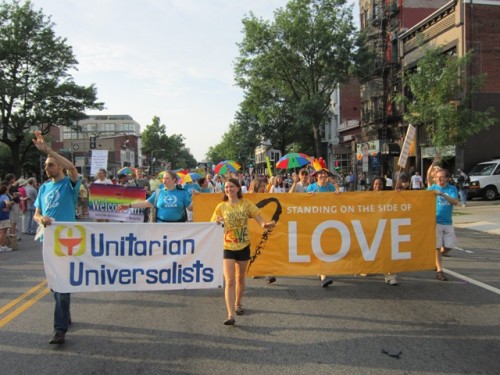[The following is a guest post from Rachael Watcher, Public Information Officer at Covenant of the Goddess (COG), part of the Pagan Newswire Collective’s Bay Area bureau, and a trustee of the North American Interfaith Network (NAIN).]
On February 29th I begin a trip to Haridwar India to attend a conference produced in part by the International Center for Cultural Studies with participation from the Council of Elders of the Sacred Maya, the European Congress of Ethnic Religions and many others. It was being held from march third through seventh of this year on the university campus of Dev Sanskriti Vishwa Vidyalaya. Its theme of four this year was Nourishing the Balance of the Universe, a gathering of the Elders. Indigenous and Pagan representatives from all over the world gathered to participate with over 450 delegates from both ancient and endangered cultures and new and reconstructed Pagan religious movements. This is the fourth annual conference which is held every three years.
As late as December of last year, I has had no plans to go. In fact I have not even been aware that this conference existed. However, I received a request to speak about Wicca during late December at a Hindu temple in Fremont California. There I met Dr. Radheshyam Dwivedi, the president of the organization, who invited me to attend if possible, promising that all conference fees would be waived on my behalf and that room and board would be provided should I be able to provide transportation. After a couple of weeks’ consideration and discussion with a friend already involved with sister organizations, we decided to go and plans were hurriedly made to renew passports, apply for visas, and find tickets to New Delhi.
I’ve been involved in interfaith both nationally and internationally for about the last 10 years. In almost every organization, and every meeting, the attendance was primarily of the Levantine religions, that is to say Christian, Jewish, and Muslim attendees with a smattering of Buddhist, Sikh, and Hindu participants tossed in for good measure, and of course yours truly generally holding Neo-Pagan and Wiccan representation. Attending a conference in which the majority of representatives were of indigenous peoples with a large number of European pagan representatives present but no Christians, Muslims, or Jews was a very unique experience for me.
There were for me three main and powerful impressions. The first was that of the organizational structure of the event. It is difficult to describe the differences in how this event was handled compared to those conferences in which large corporate religions have charge. A friend of mine is fond of the word “chaortic” to describe the outgrowth of an event from the ground up, rather than a micro managed top down approach. This was such an event. I had come to be quiet, listen, and learn. During the opening plenary I took a seat in the journalists’ section prepared to take photographs and copious notes. Instead I found myself escorted up to the stage to be seated among 30 or so of the most honored Elders. Though I was deeply honored, it resulted in my being seated so that my entire view consisted of the backs of heads and a bright lights and my face; definitely not something that I had planned for nor been informed of, and I am pretty sure that it was a last minute thought.
On the second day while in conversation with individuals regarding monist and panentheistic approaches to deities, I was approached by a person who explained that he would be the respondent for my panel and asked for the topic of my talk and information for brief introduction. This came as something of a surprise, as I had not been planning to give a talk. Apparently the organizers assumed that as Elders each of us would have something to say. I found that many other presenters had discovered themselves to be in the same position. Remarkably enough this did not diminish the quality of the presentations though it certainly made it difficult to keep up with an ever changing program.
httpv://www.youtube.com/watch?v=F9fXpLmTqLk
My second impression was that of the energy, abundant during this conference. While the energy at other conferences I have attended is careful, and subdued, with everyone aware that the wrong choice of words could easily be misconstrued, or inadvertently insult, here it was both uninhibited and spontaneous. There was only absolute openness, and excitement in sharing, with no fear of being misunderstood or insulting, or (and this was stated on more than one occasion openly) fear of proselytization. The energy raised during rituals was fierce, joyous, and impossible to contain. It was incredibly different than anything I have ever before experienced in an interfaith gathering, and came very much closer to that of pagan festivals. Here there was no reticence to discuss differences of opinion, and no lack of people with whom to discuss them.
In order to be entirely fair, I must say that the Hindu population, which by far and away exceeded the rest of us, did rather dominate the atmosphere. Hindu prayers opened every plenary and panel and closed them. The greatest number of presentations was based around Hindu themes of tradition, meditation, and Yogic practice. The main difference however, in the Hindu culture vs. the Christian culture, was that for the Hindus there was no one right in true way and their caring and support regarding the way others viewed their religion was clear. We also recognized the rituals as comfortable and familiar to the rest of us within the context of our own religions.
My third great impression of this conference was the wealth of academic information made available, even by those who had only 2 hours to prepare their talk. Many of the people attending held doctorates and master’s in varied fields of study including sociology, anthropology, philology, philosophy, and religious studies. One Canadian Dene Elder mentioned that the Europeans had brought with them the killer “Bs”; not those bees that are slowly taking over for our domestic bees in the lower states, but the “Bs” of the Bible, the Bottle, and the Bullet. This theme was picked up by Dr. Piotr Wensch (who also had about two hours’ notice), who reported that from the 14th to the 17th centuries the Polish people believed that they were part of a migration out of India. When the Russians invaded they were told that this was non-sense and the idea fell out of popular belief. Now DNA testing has proven that this is indeed the case and that Poles and Lithuanians share as much as eighty percent of the same DNA as Northern Indians. He also said that the oppressors brought a modern version of the “Killer Bs” to Poland, the Bible, Broadcasting, and the Bullet.
httpv://www.youtube.com/watch?v=GzNfCIx6HQ8
Of course the most important part of any conference are the contacts that you make and the friends that you bring back. Certainly I gave out all of my cards (and I brought a great handful) and my Facebook page was filled with “friend” requests when I finally reached internet connections again. All and all I would say that for me the program was very successful in connecting people and cultures that need to stand together or fall apart under growing corporate, high tech pressures to assimilate or fade into obscurity.
[You can read more about Rachael Watcher’s trip to India at the COG Interfaith Reports blog. Here’s part one, and here’s part two. Both give additional background and detail, and are worth reading as supplemental material to this post. It should be noted at Pagan activist Patrick McCollum was also in attendance at this conference, you can read about his trip to India, here. You may also be interested in my recent post about the Hindu-Pagan panel at PantheaCon.]















